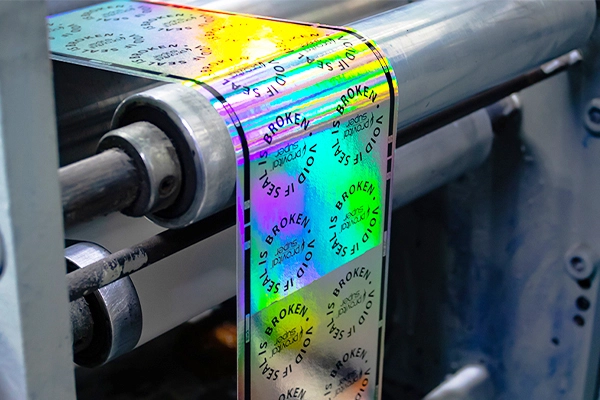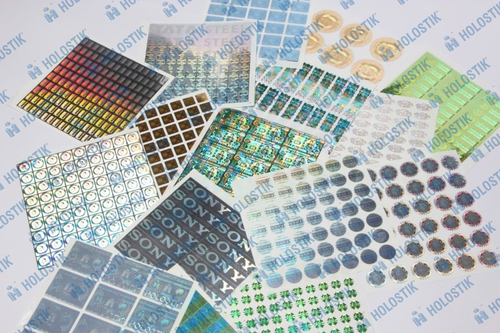
Introduction to Sustainability in Anti-Counterfeit Printing
The world is rapidly evolving, and with it, the need for sustainable solutions in various industries is growing. One such industry is anti-counterfeit printing, which plays a crucial role in safeguarding products and brands. The integration of sustainability into anti-counterfeit printing is not only essential for environmental conservation but also for reducing costs and improving efficiency. In this article, we will delve into the importance of sustainability in anti-counterfeit printing, its benefits, and the future it holds.
Understanding Anti-Counterfeit Printing
Anti-counterfeit printing is a method used to protect products from being illegally replicated. This involves the use of special inks, holograms, and other techniques to ensure that products are genuine. Given the rise in counterfeit products, especially in industries such as pharmaceuticals and automotive parts, the need for effective anti-counterfeit solutions is more critical than ever. You can learn more about pharmaceutical serialization compliance to understand how these solutions are being implemented in the pharmaceutical industry.
Why is Sustainability Important in This Sector?
The integration of sustainability in anti-counterfeit printing is vital for several reasons. First, it reduces the environmental impact by minimizing waste and using eco-friendly materials. Second, it enhances the efficiency of the printing process, leading to cost savings. Lastly, sustainable practices in anti-counterfeit printing contribute to brand reputation and customer trust.
Eco-Friendly Materials and Technologies
The shift towards sustainable materials in printing is gaining momentum. This includes the use of biodegradable inks and recyclable substrates. Additionally, advances in printing technology, such as digital printing, allow for more precise and efficient anti-counterfeit measures, reducing waste and energy consumption.
Benefits of Sustainable Practices
Adopting sustainable practices in anti-counterfeit printing offers numerous benefits. It helps in conserving resources, reducing carbon footprint, and promoting a positive image for brands. Moreover, it aligns with global sustainability goals, making it a strategic advantage for businesses.
Challenges in Implementing Sustainability
While the benefits are clear, there are challenges that businesses face in implementing sustainable practices in anti-counterfeit printing. These include the initial cost of investment in new technologies and the need for specialized knowledge and training in new printing techniques. However, as the demand for sustainable solutions increases, these challenges are expected to diminish over time.
Cost Implications
One of the primary concerns for businesses is the cost associated with transitioning to sustainable practices. Although the initial investment might be high, the long-term savings in terms of materials and energy use can outweigh these costs. Additionally, businesses can benefit from incentives and subsidies offered for adopting eco-friendly practices.
Technological Adaptation
Another challenge is adapting to new technologies. The printing industry must embrace innovative solutions, such as IoT and smart labels, which are essential for enhancing sustainability in anti-counterfeit printing. These technologies not only improve efficiency but also provide better tracking and authentication of products.
The Future of Sustainability in Anti-Counterfeit Printing
As sustainability becomes a focal point across industries, the future of anti-counterfeit printing lies in continuous innovation and adaptation. Businesses will need to invest in research and development to stay ahead of counterfeiters while maintaining sustainable practices. Collaborations between industry players, government agencies, and consumers will be crucial in driving this change.
Innovative Solutions
Future innovations in anti-counterfeit printing will likely involve advanced technologies such as blockchain and artificial intelligence. These technologies can provide more secure and reliable anti-counterfeit solutions while supporting sustainability efforts.
Collaboration and Awareness
To achieve sustainability in anti-counterfeit printing, collaboration among stakeholders is essential. Businesses must work together to share knowledge and resources, while consumers need to be educated about the importance of purchasing genuine products. More information on this can be found at Plus Technologies.
Conclusion
The integration of sustainability in anti-counterfeit printing is not just a trend but a necessity for the future. By adopting eco-friendly practices, businesses can protect the environment, reduce costs, and enhance brand value. As technology advances, the possibilities for sustainable anti-counterfeit solutions are endless, paving the way for a greener and more secure future.

FAQs
What is anti-counterfeit printing?
Anti-counterfeit printing involves using specialized techniques and materials to prevent the illegal replication of products, ensuring authenticity and protecting brands.
How does sustainability benefit anti-counterfeit printing?
Sustainability in anti-counterfeit printing reduces environmental impact, lowers costs, and enhances brand reputation.
What challenges exist in implementing sustainable practices?
Challenges include the initial cost of investment in new technologies and the need for specialized training. However, these can be offset by long-term savings and benefits.
This article contains affiliate links. We may earn a commission at no extra cost to you.







